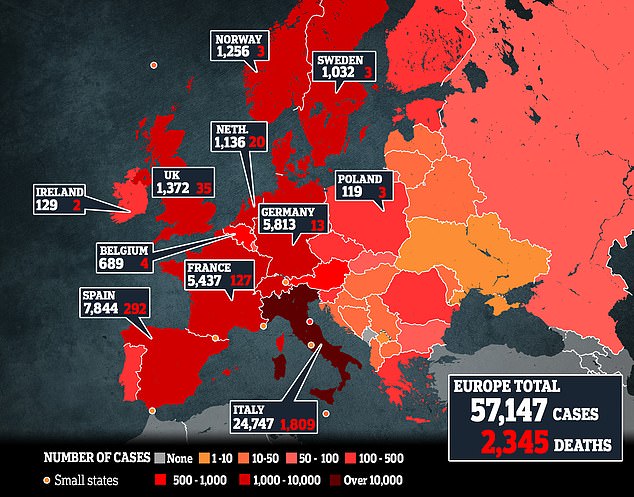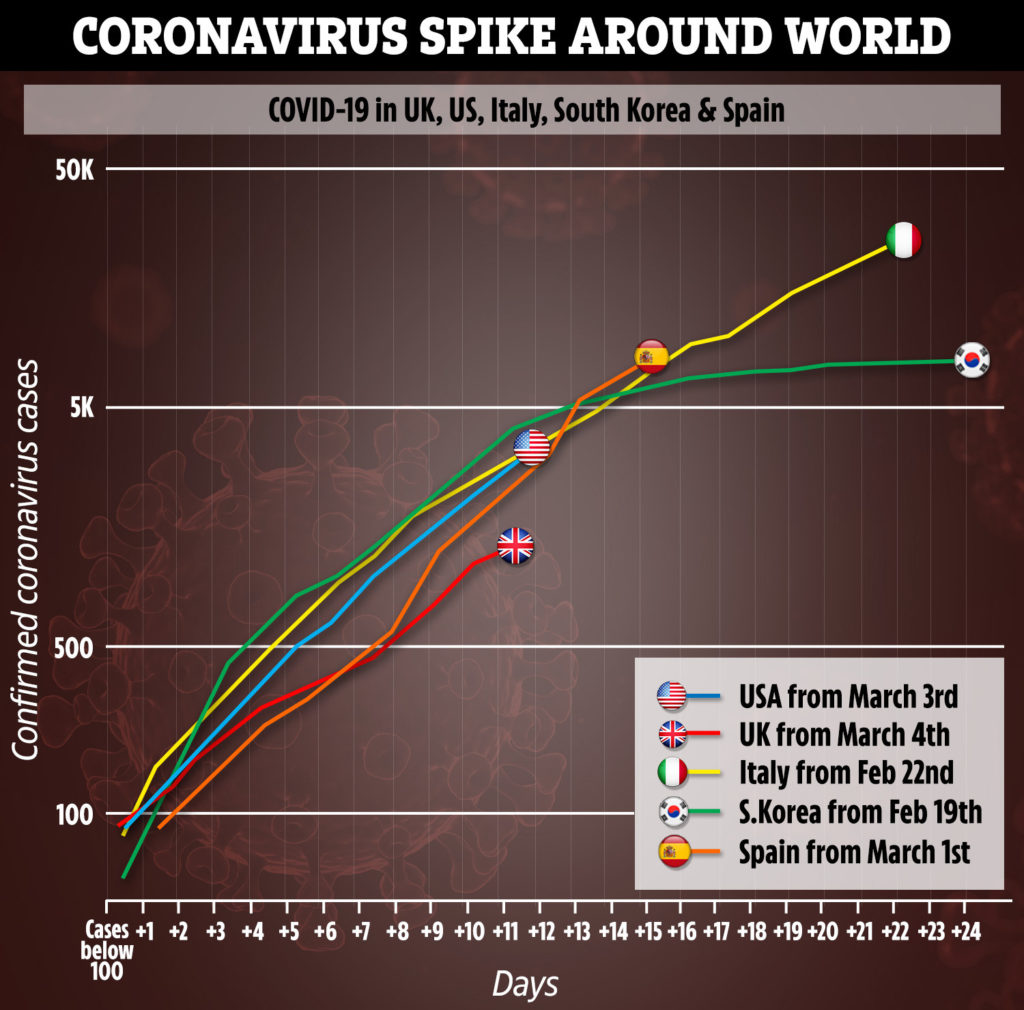UK coronavirus crisis ‘to last until spring 2021 and could see 7.9m hospitalised ! Exclusive: Public Health England document seen by Guardian says four in five ‘expected’ to contract virus

The coronavirus epidemic in the UK will last until next spring and could lead to 7.9 million people being hospitalised, a secret Public Health England (PHE) briefing for senior NHS officials reveals.
The document, seen by the Guardian, is the first time health chiefs tackling the virus have admitted that they expect it to circulate for 12 more months and lead to huge extra strain on an already overstretched NHS.
It also suggests that health chiefs are braced for as many as 80% of Britons becoming infected with the coronavirus over that time.
Prof Chris Whitty, the government’s chief medical adviser, has previously described that figure as the worst-case scenario and suggested that the real number would turn out to be less than that. However, the briefing makes clear that four in five of the population “are expected” to contract the virus.
The document says that: “As many as 80% of the population are expected to be infected with Covid-19 in the next 12 months, and up to 15% (7.9 million people) may require hospitalisation.”

The briefing sets out the latest official thinking about how severely the infection could affect both the public’s health and that of personnel in critical services such as the NHS, police, the fire brigade and transport.
It has been drawn up in recent days by PHE’s emergency preparedness and response team and approved as accurate by Dr Susan Hopkins, PHE’s lead official dealing with the outbreak. It has been shared with hospital bosses and senior doctors in the NHS in Engand.
“For the public to hear that it could last for 12 months, people are going to be really upset about that and pretty worried about that”, said Paul Hunter, a professor of medicine at the University of East Anglia. “A year is entirely plausible. But that figure isn’t well appreciated or understood,” added Hunter, an expert in epidemiology.
“I think it will dip in the summer, towards the end of June, and come back in November, in the way that usual seasonal flu does. I think it will be around forever, but become less severe over time, as immunity builds up,” he added.
The admission that the virus will continue to cause problems for another year appears to undermine hopes that the arrival of warmer weather this summer would kill it.
The document also discloses that an estimated 500,000 of the 5 million people deemed vital because they work “in essential services and critical infrastructure” will be off sick at any one time during a month-long peak of the epidemic. The 5 million include 1m NHS staff and 1.5 million in social care.
However, the briefing raises questions about how Britain would continue to function normally, warning that: “It is estimated that at least 10% of people in the UK will have a cough at any one time during the months of peak Covid-19 activity.” Under revised health advice Boris Johnson unveiled last Thursday, anyone with a cough should self-isolate for at least seven days.
The document also states that:
- The health service cannot cope with the sheer number of people with symptoms who need to be tested because laboratories are “under significant demand pressures”.
- From now on only the very seriously ill who are already in hospital and people in care homes and prisons where the coronavirus has been detected will get tested.
- Testing services are under such strain that even NHS staff will not be swabbed, despite their key role and the risk of them passing the virus on to patients.
A senior NHS figure involved in preparing for the growing “surge” in patients whose lives are being put at risk by Covid-19 said an 80% infection rate could lead to more than half a million people dying.
If the mortality rate turns out to be the 1% many experts are using as their working assumption then that would mean 531,100 deaths. But if Whitty’s insistence that the rate will be closer to 0.6% proves accurate, then that would involve 318,660 people dying.
Experts advising governments worldwide on the way epidemics grow and eventually decline say there will be a rapid rise in cases to a peak – and then a falling off. Whitty, who has seen the modelling done by UK and global scientists, says the case numbers will go up fast over the next 10 to 14 weeks.

That will mean a peak at around the end of May to mid-June, when the NHS will be under great pressure. The strategy of all countries is to delay that peak and stretch it out over a longer period of time, so that health services are better able to cope. There is also the possibility that new treatments will be available by then.
After the peak, case numbers and deaths are expected to drop for 10 weeks or more, until they reach a fairly low level, which may not be zero. In the summer months especially, the case numbers are expected to reduce because people spend more time out of doors and are less likely to be confined at close quarters in small rooms in a house or office with people who are infected.
There is still a worry that the virus could resurge in the autumn or winter months, which means planning for the long term will be necessary. Until a vaccine is developed, perhaps in 18 months, health planners cannot be sure of being able to protect people from the disease.
Source: The Guardian

